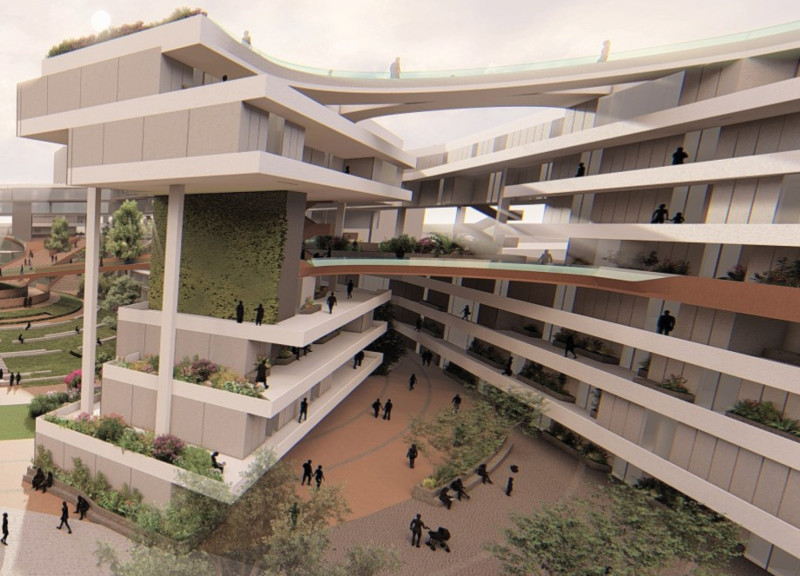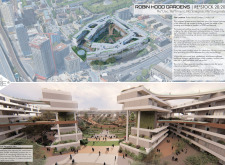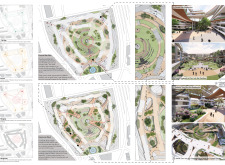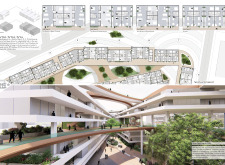5 key facts about this project
Creating an engaging residential environment, Robin Hood Gardens incorporates various unit types to accommodate a diverse demographic, from singles to families. The use of materials such as precast concrete, glass, and sustainably sourced timber aligns with modern architectural practices while ensuring structural integrity and aesthetic appeal. Central to the design are landscaped areas that serve dual purposes: enhancing biodiversity and providing communal spaces for residents.
Sustainability and Community Engagement
What distinguishes Robin Hood Gardens from other housing projects is its thoughtful integration of green spaces within a compact urban environment. The architectural design utilizes green roofs and landscaping that not only enhances the visual appeal but also supports ecological functions, promoting wildlife habitats and improving air quality. The spiraling paths and communal gardens encourage social interaction and physical activity, fostering a sense of community among residents. This design approach prioritizes the residents’ well-being and socialization through accessible and inviting public spaces.
Flexibility and Versatility in Design
The architectural layout promotes flexibility through adaptable living units. By offering various housing types and configurations, including studio apartments and multi-bedroom units, the design addresses the changing needs of urban living. The internal structure supports diverse living arrangements and facilitates ease of movement across communal areas. This versatility is evident in the introduction of walkways and bridges that enhance accessibility and connectivity throughout the estate. Residents can easily navigate between their homes and shared spaces, reinforcing social ties and ensuring an interconnected living experience.
For a comprehensive understanding of the design and its architectural nuances, readers are encouraged to explore the project presentation further. Detailed architectural plans, sections, and design elements provide valuable insights into the innovative approaches taken in developing Robin Hood Gardens. Engaging with these resources can deepen appreciation for the thoughtful integration of sustainable practices and community-centric design within modern architecture.


























